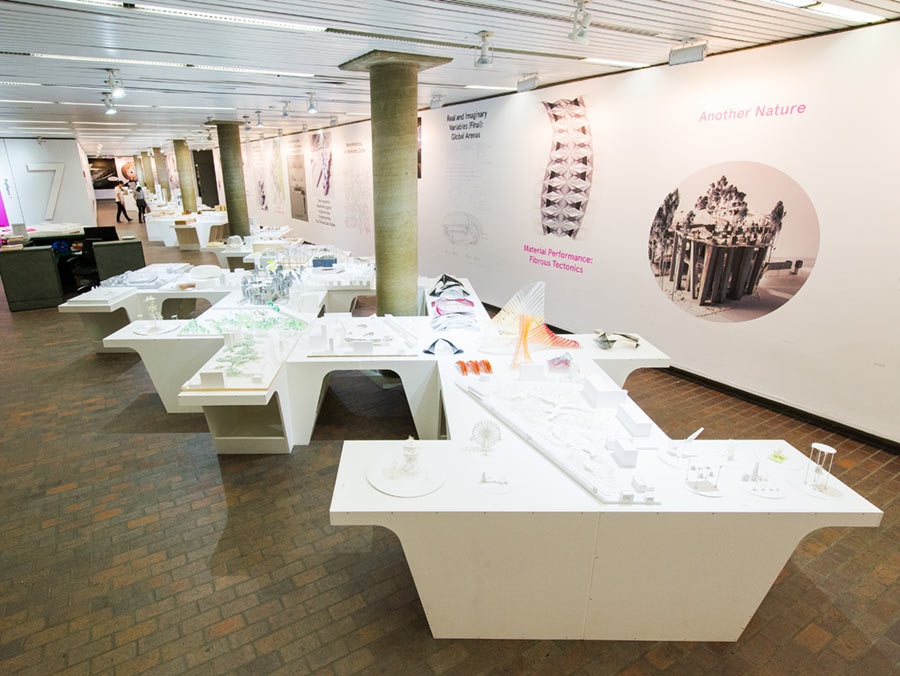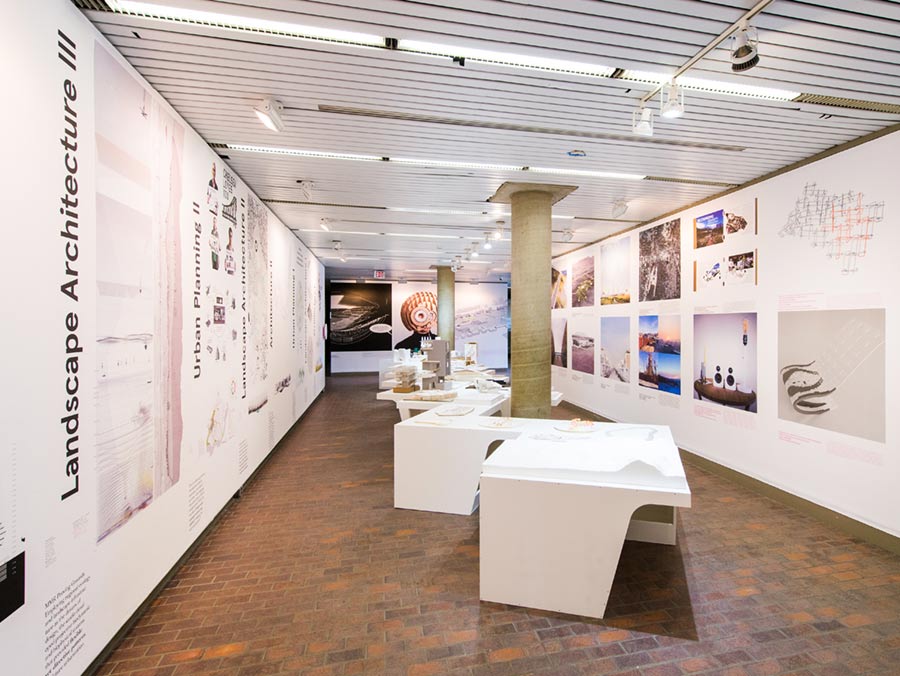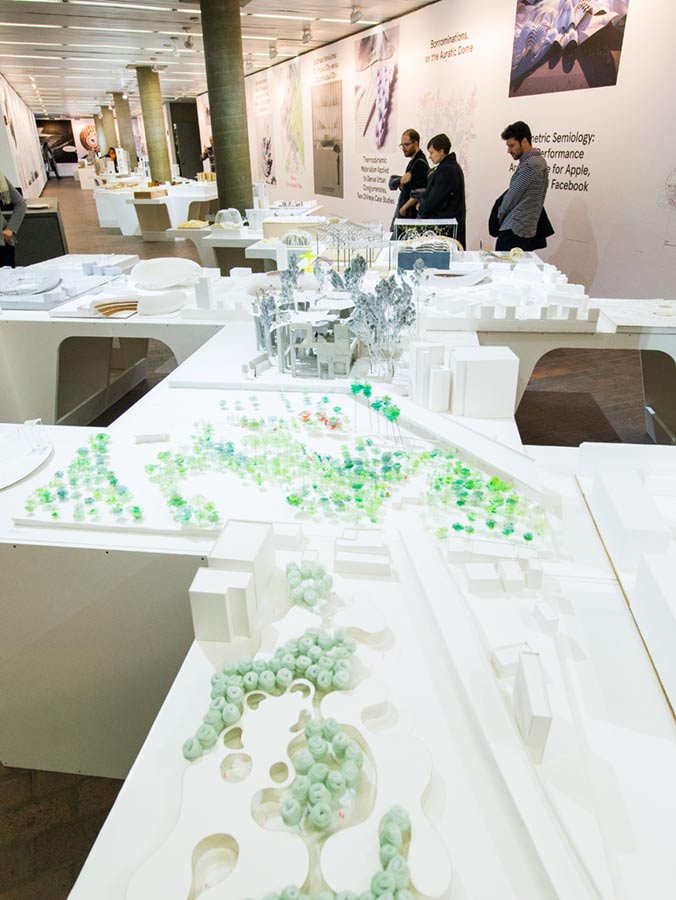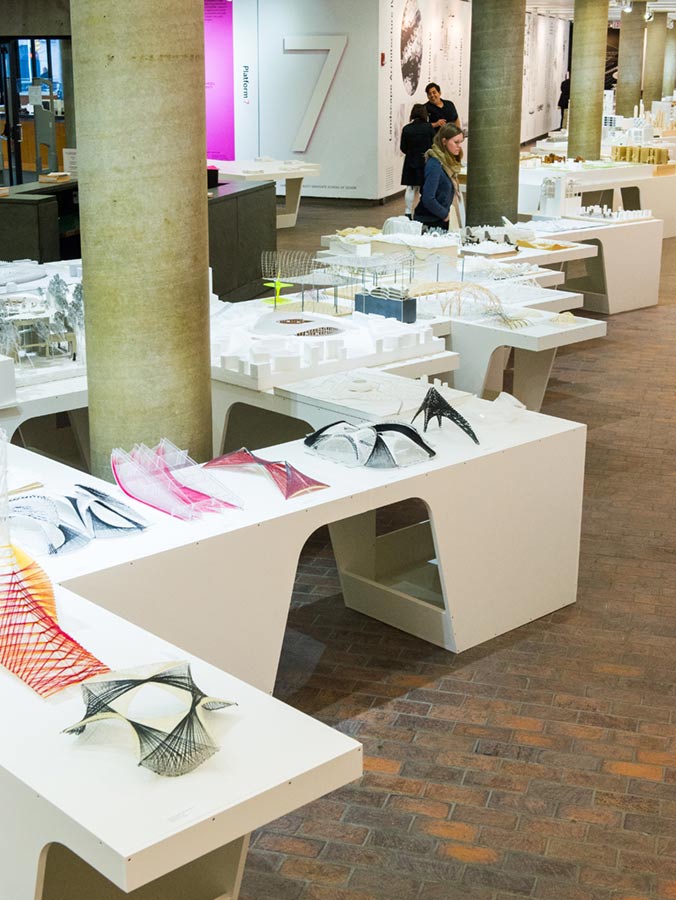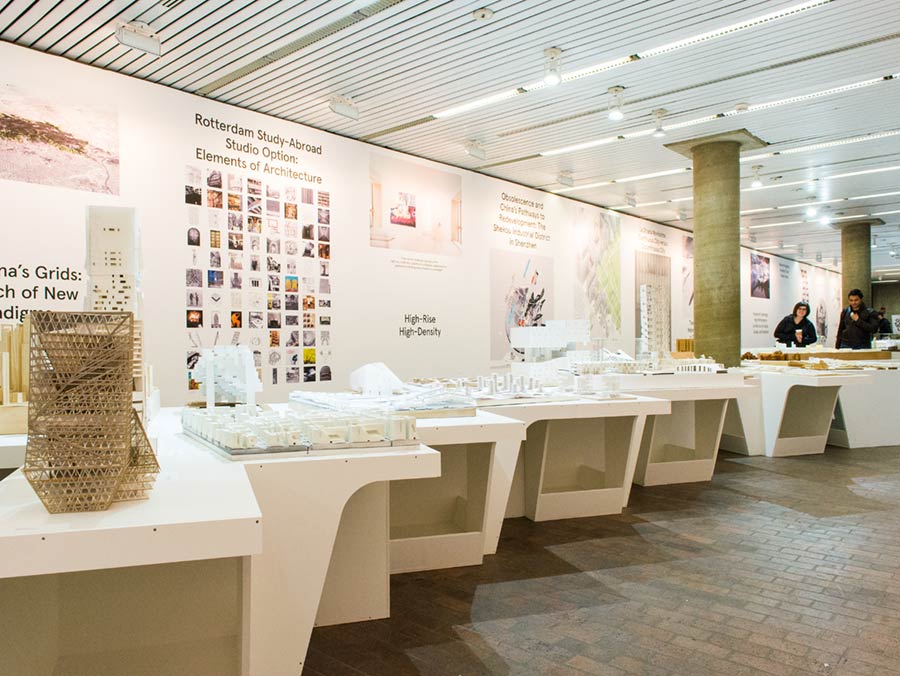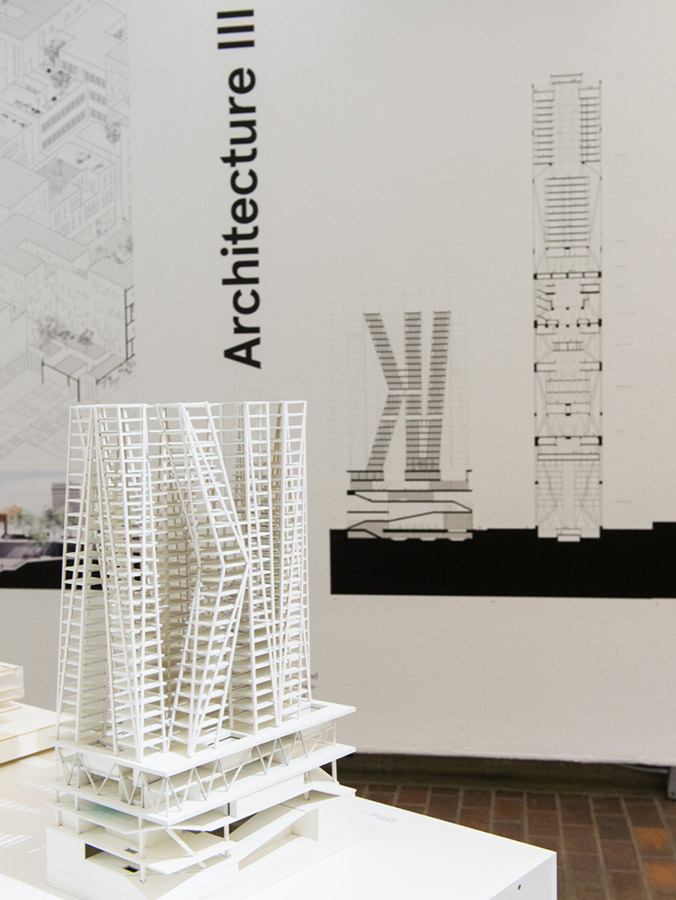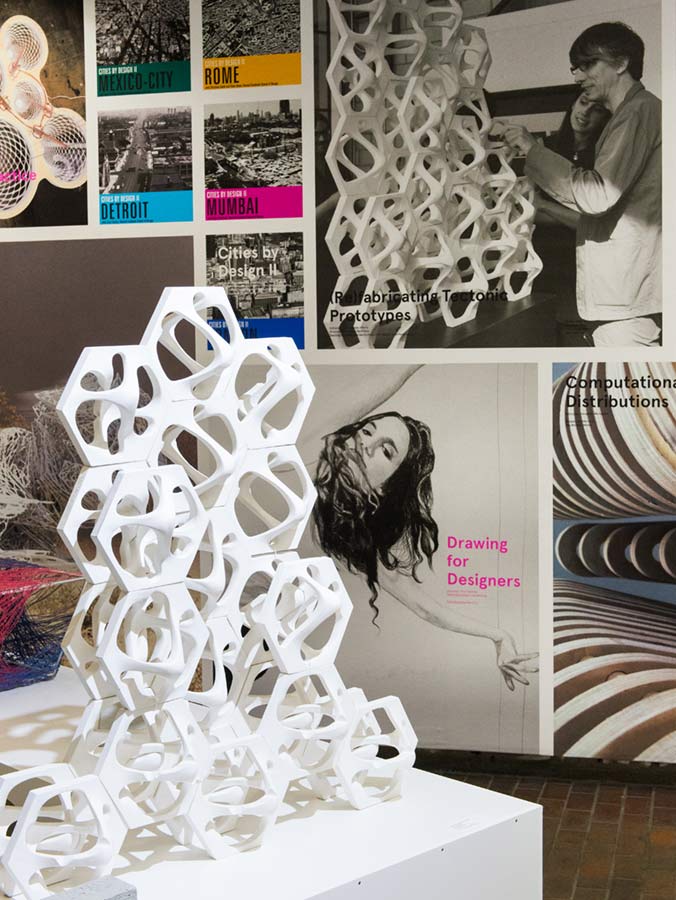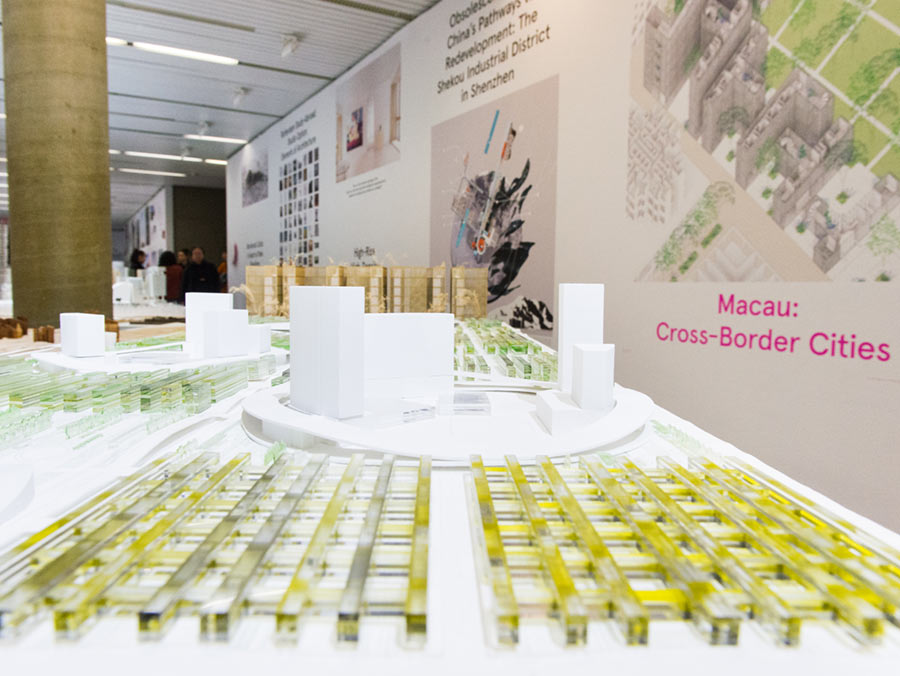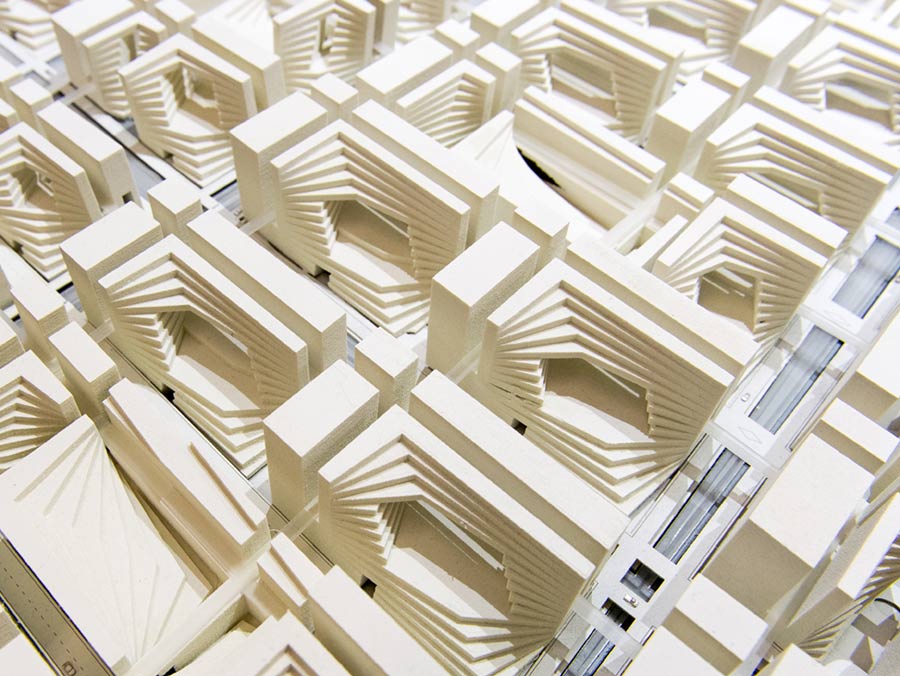Platform 7 Exhibition
March 23, 2015–May 15, 2015
Leire Asensio Villoria, curator
Imagine a recording of a piece of classical music—or any musical recording, for that matter. As you listen, the emphasis is invariably on the sounds heard, apprehended, and felt by your ears, mind, and body. Separated from the performance that led to the making of the recording, your focus and experience is limited to the auditory outcome of the act of performing.
Now picture yourself at a live performance—say, of a chamber ensemble, jazz trio, or rock group—and then it becomes impossible to separate the sensorial experience of the performance before you from the qualities of the sounds produced as a consequence.
Playing music is both a physical and a participatory act. The making of chamber music, for example, is deeply intertwined with the movements of the body, the gestures of the hand, the rhythm of breathing, and the visual as well as sensory acknowledgment of the temporal responsiveness to others that is a prerequisite for the act of playing together.
The making of this book is in some ways akin to making a recording. This volume documents a series of activities and events—all performances of a sort—and their outcome at the Harvard Graduate School of Design during the past academic year. It brings together the work of a multitude of designers, authors, and makers, and in the process represents the work within the logics and limits of producing a book. I am grateful to Leire Asensio Villoria and the group of students who collaborated with her on the selection, assembly, and organization of content from the large body of available material.
Building on previous years’ advances, this has been a time of deliberate transition, change, and transformation at the GSD, including the launch of numerous pedagogic and research initiatives. Many of these projects reflect the School’s desire to have global impact and transform the built environment for the better. Like music, these projects have often been created through a combination of individual effort and collaborative practice, with a mindfulness of their reception and consequences for others. We feel compelled to highlight both the autonomy of the output as presented and the performative, circumstantial, and globally responsive conditions of its making. It is very important for us that the work of students and faculty is situated in the world and in the process rethinks and remakes that world.
Our engagements with other parts of the University are beginning to produce interesting results. These include research on health and urbanization in collaboration with the Harvard School of Public Health and a proposed master’s degree in Design Engineering with the School of Engineering and Applied Sciences. It was also rewarding for us to be able to cosponsor the Deans’ Design Challenge, “Urban Life 2030,” at the Harvard Innovation Lab; this project brought together students from across the University to collaborate on innovations for the future of our cities.
These efforts parallel the success of the D-Labs, our faculty and student design research platforms that are undertaking significant investigations of the built environment from multiple perspectives and at multiple scales.
It would be impossible for a publication to document all of the School’s work, collaborations, performances. This volume attempts to record a selective yet representative sample of the GSD’s wide-ranging design proposals and
activities.
A recording—a book—has led, in the process of its own making, to the production of a new view, with its own logics of affiliations, proximities, and connections.
Mohsen Mostafavi
Dean and Alexander and
Victoria Wiley Professor of Design
August 2014
To communicate life at the GSD through a publication, even if limited to consideration of a single academic year, presents an engaging yet daunting exercise. There is certainly no scarcity of compelling design production, observable on even a casual stroll through the trays. Nor is there an absence of captivating lectures, conferences, symposia, and even gossip floating throughout the rooms and corridors at the School.
Yet to isolate a number of clear and common themes that allow for the unambiguous aggregation of various aspects of the GSD’s creative activities into neat chapters can be elusive, and the ambition to do so capricious. How one decides on criteria for organizing such an overwhelming amount of activity and production is, unsurprisingly, not immediately obvious. Given such a mandate, I opted to use this year’s Platform to communicate the very broadest range of work and events at the School.
It began for me with the simple organization of this year’s content into straightforward categories. Studios, courses, lectures, exhibitions, and thesis projects are all sponsored by the three departments at the School and have been used as some of the specific sections of Platform 7. This clear-cut arrangement offered us an opportunity to place analogous work from the different departments in close proximity. An example of this can be seen with the core studios of all departments, which have been combined into a shared chapter, giving us a window into the distinct issues that are addressed in the core design sequence of each particular discipline. This grouping also allows us to recognize some unexpected moments of overlapping interests or commonality, a finding that extends across the curriculum and in the many events hosted by the GSD.
And this for me is one of the more absorbing aspects of the work and life here, where the diversity and breadth of the activity can be attributed to a combination of both highly specific and disciplinarily bounded explorations and something that emerges from collaboration and influence across disciplines. Unlike many other architecture schools that encompass a range of departments, the GSD is exceptional in the ease with which it appears to maintain a careful balance between having three departments with distinctive identities while also being the site where so much compelling collaborative work is nurtured. To highlight this condition, we used the color pink to distinguish some of the particularly noteworthy instances of cross-disciplinary exploration.
In many ways this intellectual duality resonates with the material reality of life at the GSD. Gund Hall’s accommodation of students, staff, and faculty of all departments under one roof may be the most immediately evident illustration of this idea. The vast building places all three departments in close contiguity, enabling each department to find its own zone of operation, while also offering a shared setting within which the disciplines can collaborate, discuss, and be inspired by one another.
We kick off this year’s volume of Platform with interviews of several members of the GSD community. The interviewees were approached to gather their insights into the value of this diversity that we recognized. While all responded to the same set of questions, we believe that the assortment of ideas and opinions that emerges out of the exercise provides both an engaging read and a useful frame for the showcased work and record of events that follow.
To present a complete picture of the many facets of design exploration at the GSD, the burgeoning activities of the School’s various research groups as well as GSD life have been included in this year’s Platform. It is also precisely in areas like these, where the community comes together either socially or engages the wider world, that we can see more immediately the value of the rich diversity cultivated at the GSD.
Leire Asensio Villoria
Lecturer in Architecture and
Landscape Architecture
August 2014
